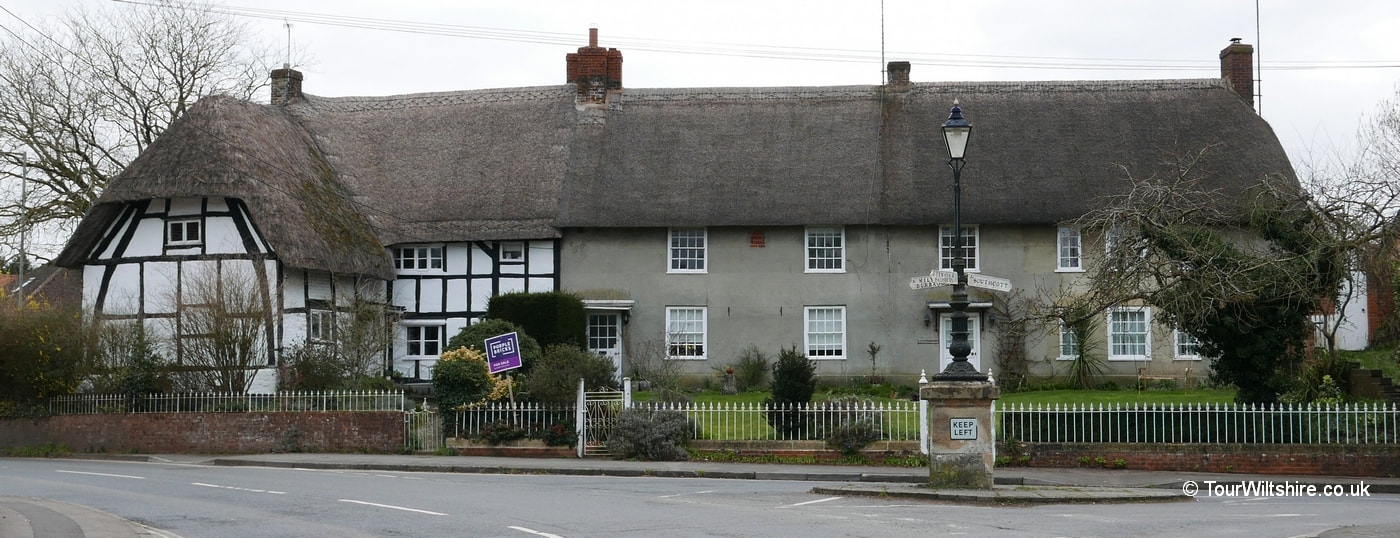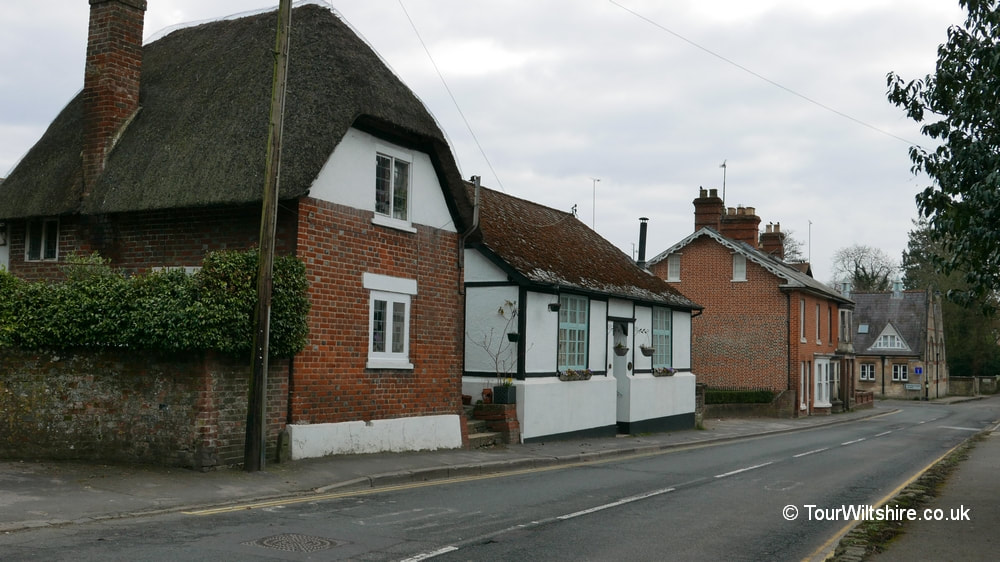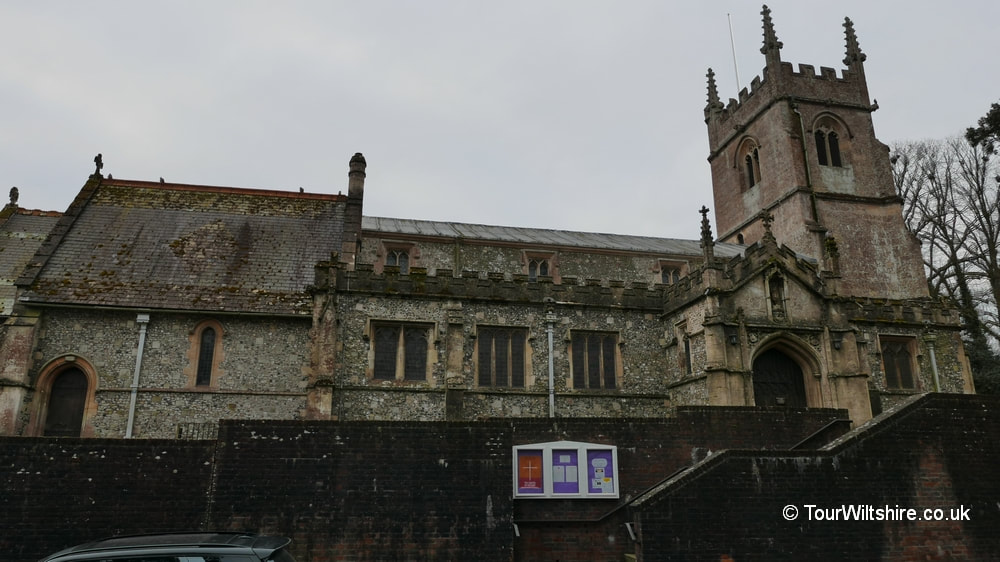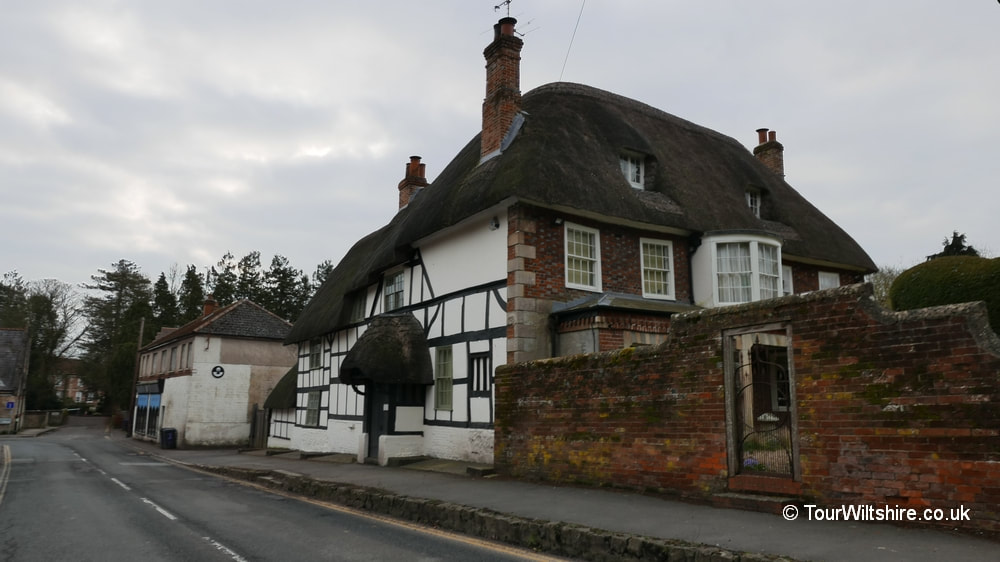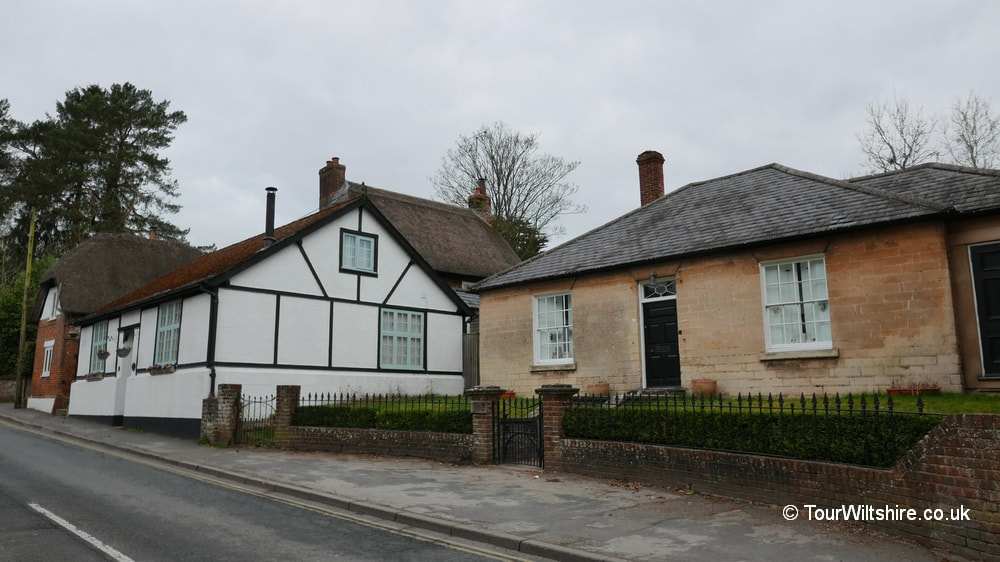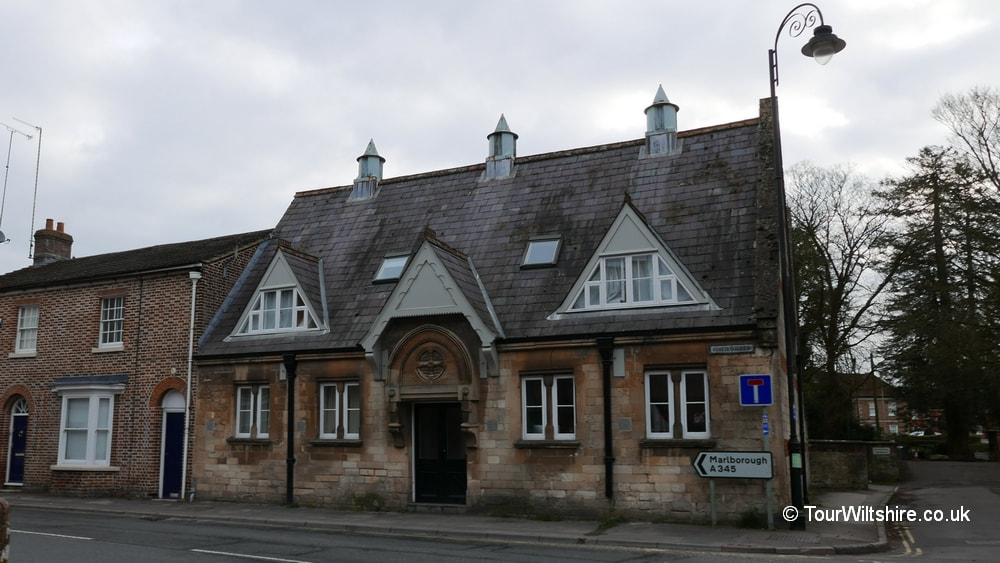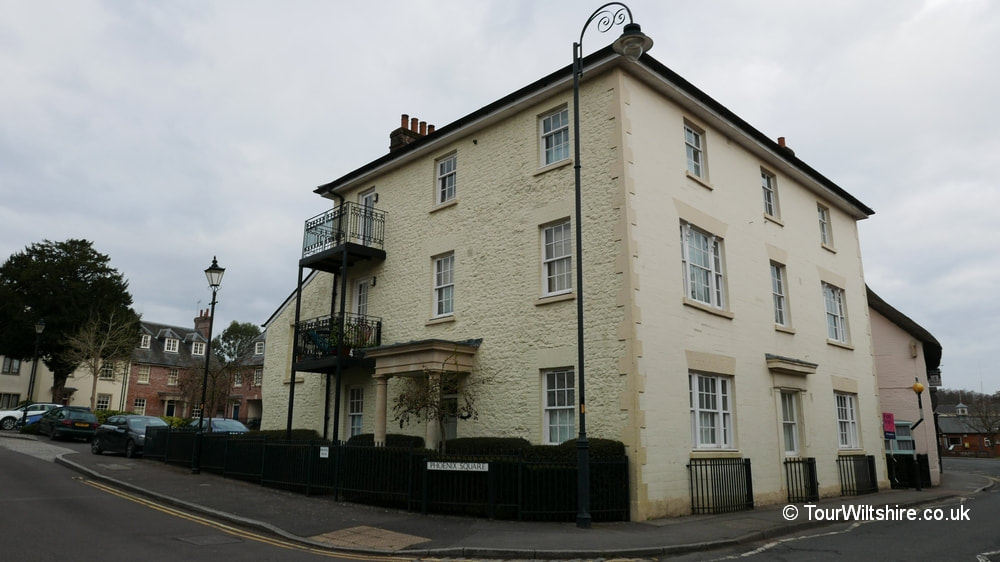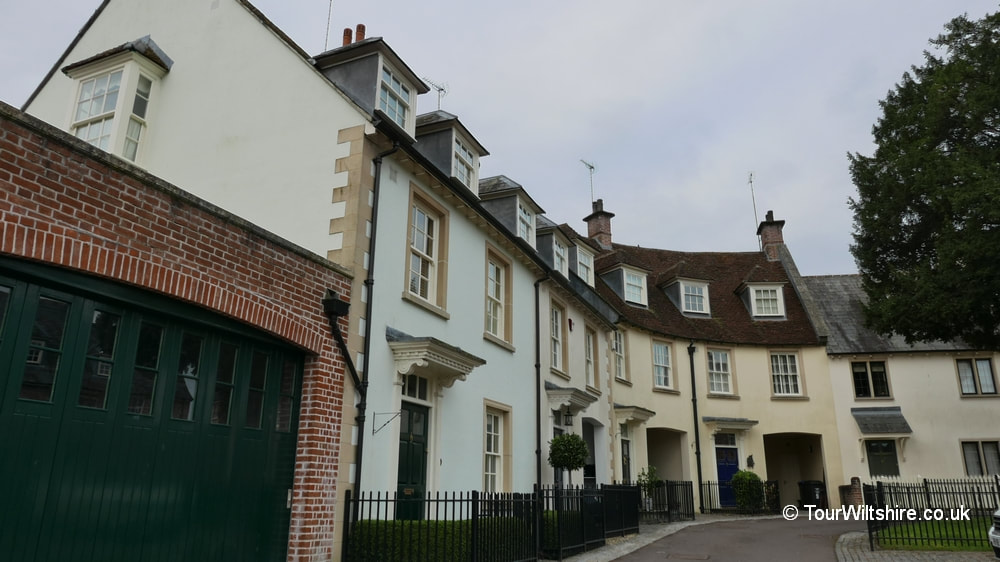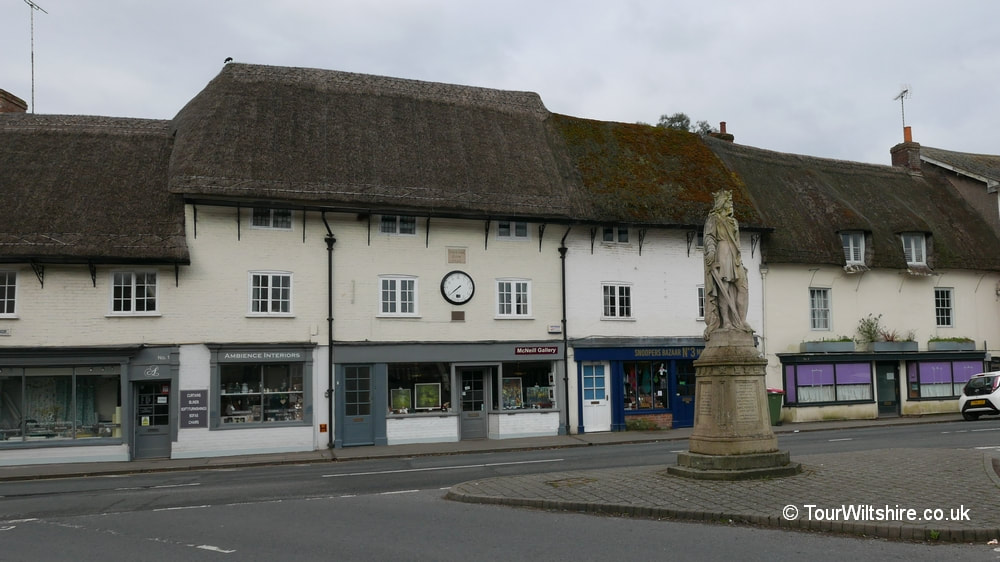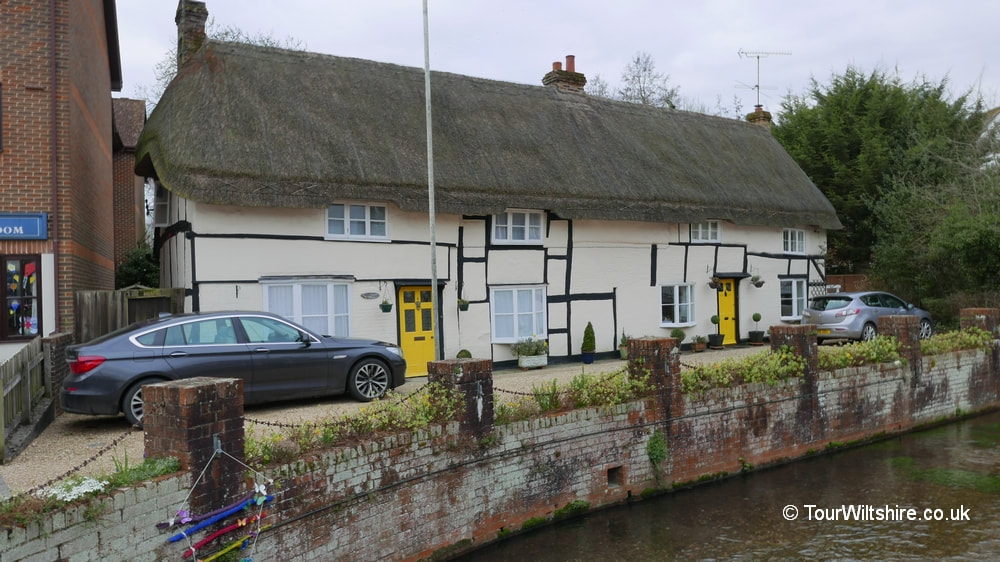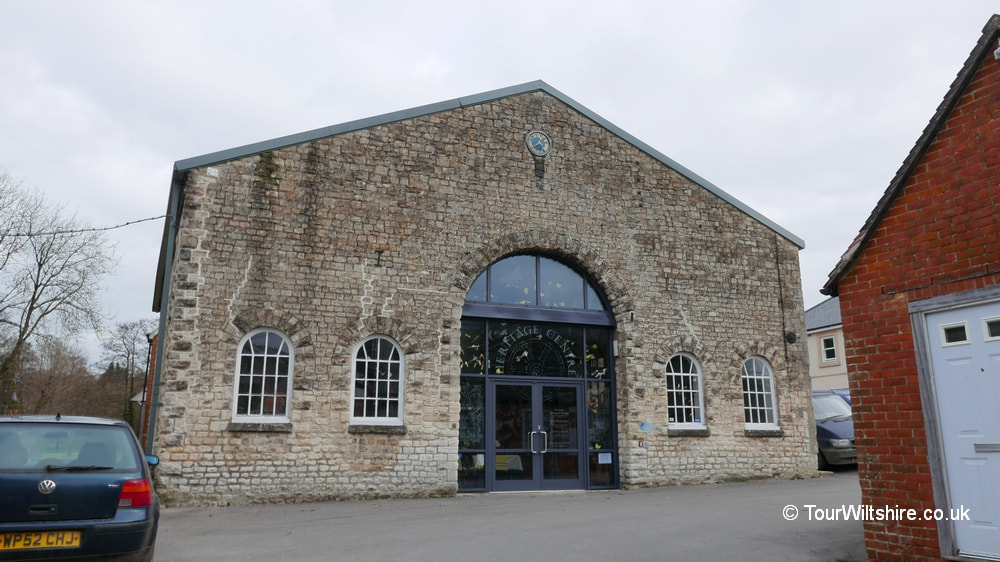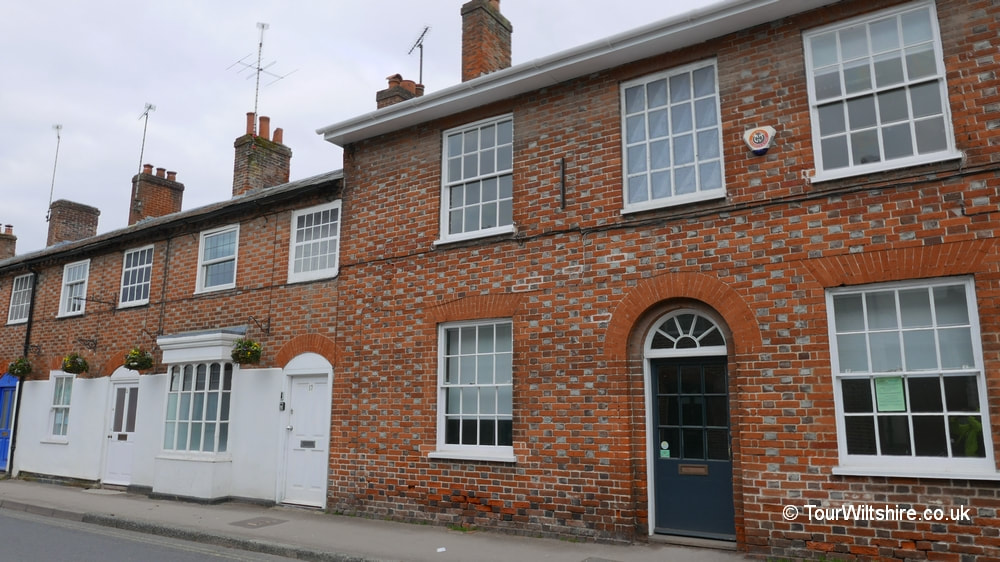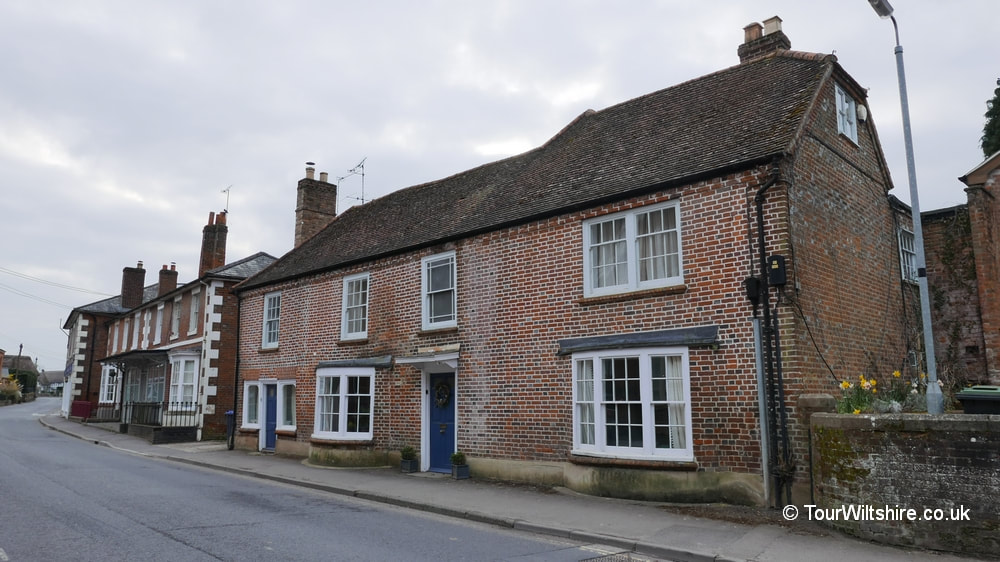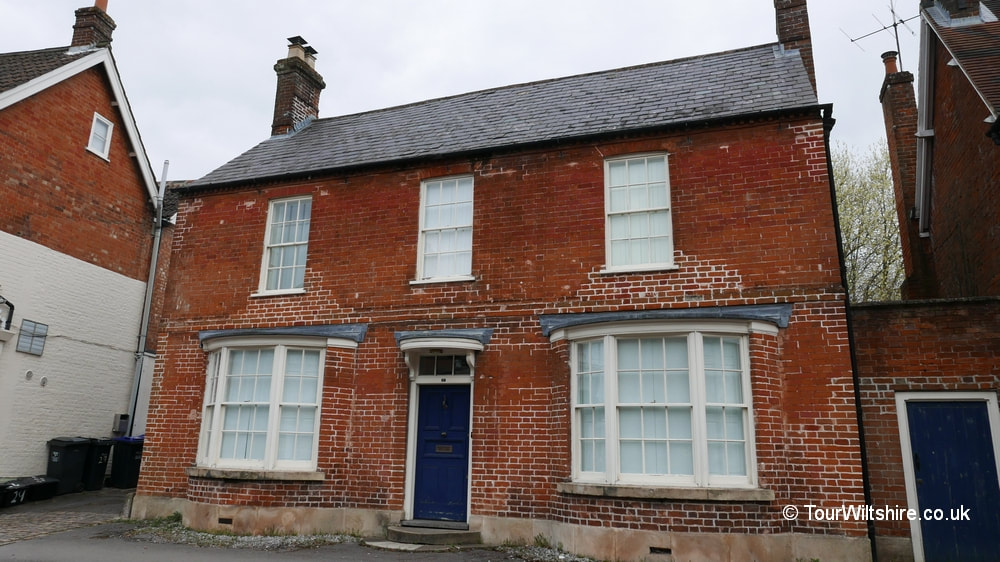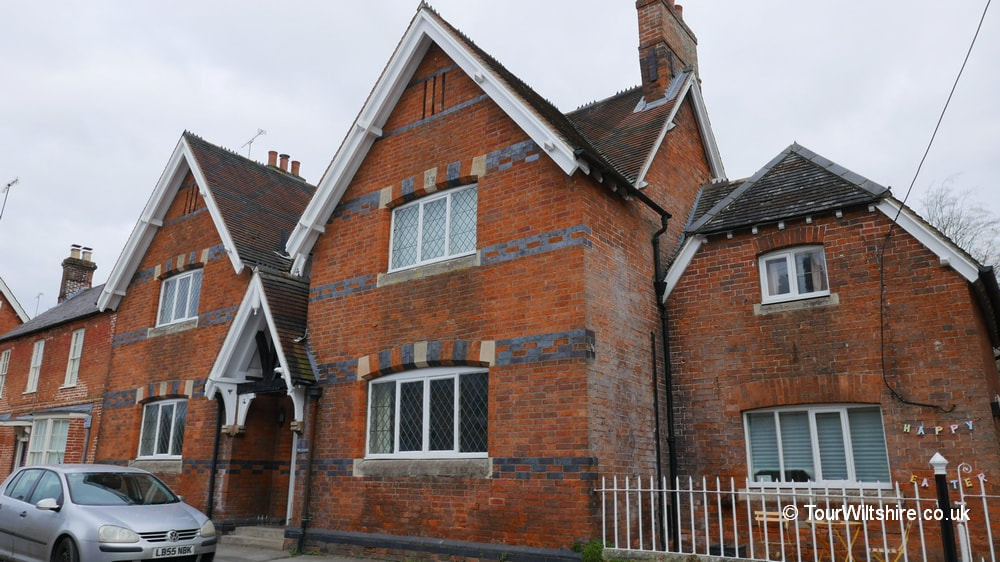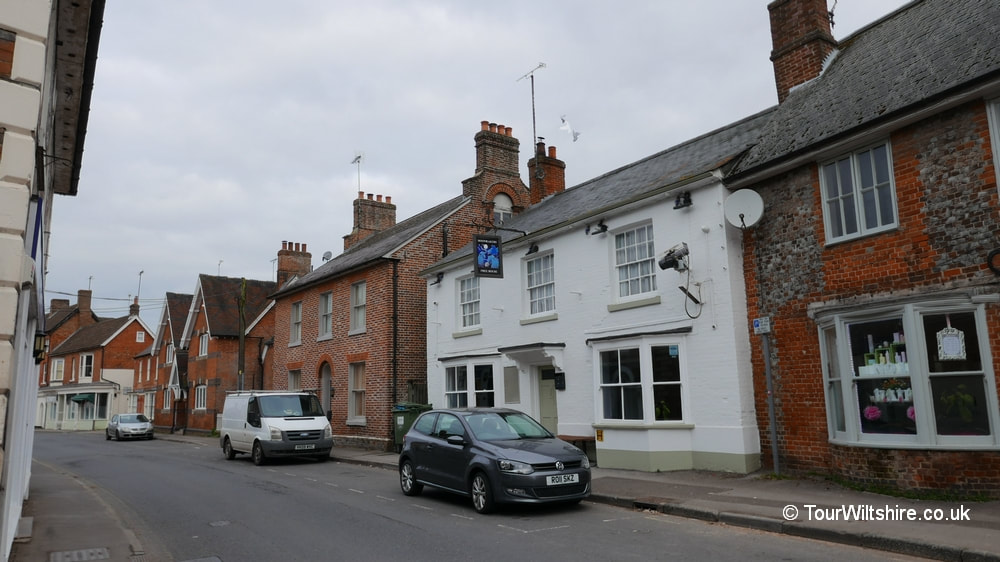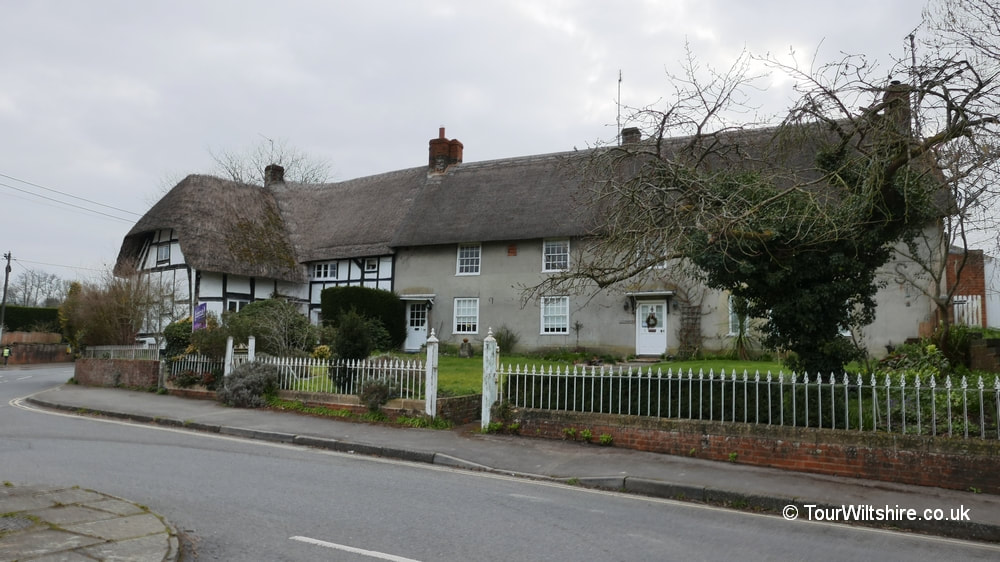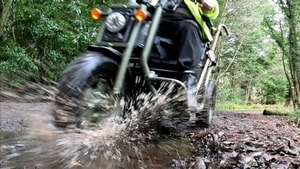⭐⭐⭐
Pewsey, Wiltshire
Pewsey is a large village of approximately 3,500 residents found approximately 6 miles south of Marlborough, and is served by its own mainline railway station serving Taunton, Reading, and beyond. Less than a mile north of the centre is Pewsey Wharf on the Kennet and Avon Canal, once a busy industrial canal wharf, now offering a pub and towpath walk.
Pewsey has 63 buildings which are Listed for their architectural merit, a good number for a village, though all but one, the Church of St John the Baptist, are just Grade II Listed. The Church of St John the Baptist is Grade I Listed and houses a 17th century working clock and fine 18th century carving by a former rector, including of the font cover. Ball House on the corner of Ball Road and the High Street, timber framed and thatched, may be the oldest house in Pewsey, possibly dating back to the 14th century. The most attractive, obviously an opinion, is the Court House, in Church Street, it's late 16th century, timber framed and thatched. If you walk from St John The Baptist church, in Church Street, through River Street, and along High Street to Ball Road, you will see most of the Listed buildings in Pewsey.
The oldest carnival in Wiltshire has been held in Pewsey since 1898, usually in September. In 1913 a statue of King Alfred The Great, was unveiled in the Market Place to commemorate the coronation of King George V, Pewsey was a royal estate until 940. In 1937 the White Horse was cut on Pewsey Hill, one mile south of the town centre, to commemorate the coronation of King George VI. The Pewsey White Horse is one of the smaller of the Wiltshire White Horses, it can be glimpsed from Everleigh Road or walked to, by the able bodied, from Green Drove (not done).
Nearly nobody is still alive who has ever known anything different in this country, but taken in the context of history it is remarkable to think that Pewsey is not unique that it is only one hundred years, since 1920, that the village had electricity, and mains water. It was another eighteen years before they got a sewage works, and only in 1941 that they got a telephone exchange. You may like to visit Pewsey Heritage Centre, tucked off the High Street behind the estate agents, in what was once the foundry building of Whatley & Hiscock, agricultural engineers.
Certainly by village standards there's a good range of pubs and grocery shops in Pewsey, as well as a doctors surgery, and pharmacy, primary and secondary schools.
For the best places to eat in Pewsey click here.
Pewsey has 63 buildings which are Listed for their architectural merit, a good number for a village, though all but one, the Church of St John the Baptist, are just Grade II Listed. The Church of St John the Baptist is Grade I Listed and houses a 17th century working clock and fine 18th century carving by a former rector, including of the font cover. Ball House on the corner of Ball Road and the High Street, timber framed and thatched, may be the oldest house in Pewsey, possibly dating back to the 14th century. The most attractive, obviously an opinion, is the Court House, in Church Street, it's late 16th century, timber framed and thatched. If you walk from St John The Baptist church, in Church Street, through River Street, and along High Street to Ball Road, you will see most of the Listed buildings in Pewsey.
The oldest carnival in Wiltshire has been held in Pewsey since 1898, usually in September. In 1913 a statue of King Alfred The Great, was unveiled in the Market Place to commemorate the coronation of King George V, Pewsey was a royal estate until 940. In 1937 the White Horse was cut on Pewsey Hill, one mile south of the town centre, to commemorate the coronation of King George VI. The Pewsey White Horse is one of the smaller of the Wiltshire White Horses, it can be glimpsed from Everleigh Road or walked to, by the able bodied, from Green Drove (not done).
Nearly nobody is still alive who has ever known anything different in this country, but taken in the context of history it is remarkable to think that Pewsey is not unique that it is only one hundred years, since 1920, that the village had electricity, and mains water. It was another eighteen years before they got a sewage works, and only in 1941 that they got a telephone exchange. You may like to visit Pewsey Heritage Centre, tucked off the High Street behind the estate agents, in what was once the foundry building of Whatley & Hiscock, agricultural engineers.
Certainly by village standards there's a good range of pubs and grocery shops in Pewsey, as well as a doctors surgery, and pharmacy, primary and secondary schools.
For the best places to eat in Pewsey click here.
Excerpts From The Wiltshire Council Timeline Of Pewsey (scroll)
Early 1200s - There are only 4 mills in existence: the Town Mill in High Street, Buckleaze Mil, Sharcott Mill at West Sharcott and Jones Mill
Early 1700s - Bricks are made in the parish from this time
C.1700 - Phoenix Inn opened
1767 - there are 3 malthouses
1773 - Workhouse opened
1780 - A typhus epidemic kills 50 people
C.1785 - A white horse is cut on Pewsey Hill
1806-1807 - Kennet and Avon Canal built across the parish and a wharf built north west of Pewsey
1814 - Workhouse now closed
1836 - Pewsey Union Workhouse built in Wilcot Road
1858 - A school held in the Union Workhouse is in existence by this time
1862 - Berks. & Hants. Extension Railway from Reading to Devizes opened across the parish
1863 - Pewsey railway station built at World's End
1865 - Gasworks opened
1879 - Gas street lighting provided by this time
1880 - Coffee house founded by Rev. Bertrand Pleydell Bouverie
1899 - Brickmaking has now ceased in the parish;
Early 1900s - Waterworks built in Wilcot Road
1907 - First motor car accident in Pewsey
1913 - Statue of King Alfred unveiled in Market Place to commemorate the coronation of King George V
1915 - Workhouse used by Wiltshire County Council to house mental defectives
1920s - A monthly livestock market is held from this time; Buckleaze Mill converted from a flour and grist mill to generate electricity; first piped water supply provided
1920 - Pewsey Electric Light Company converts the Town Mill to generate electricity for the village
1921 - The streetlighting is powered by electricity from this time
1926 to 1927 - 36 council houses built in The Crescent
1937 - A new white horse is cut on Pewsey Hill to commemorate the coronation of King George VI
1938 - Sewage works built; Rex cinema built in High Street
1941 - Telephone exchange built
1945 to 1954 - Over 100 council houses built
1946 - Workhouse renamed Pewsey Mental Hospital; North Street car park, the first official car parking spaces in Pewsey, built
C.1960 - Rex cinema closed
1970s - Last working blacksmith's closed
1980 - Jone's Mill Nature Reserve given to Wiltshire Wildlife Trust
1985 - Church Street, High Street, Market Place, River Street designated part of a conservation area
1992 - Heritage Centre opened in a former foundry in High Street
1995 - Pewsey Mental Hospital closed
2006 - Pewsey resident Shelley Rudman wins a silver medal at the Winter Olympics in Turin in the women's skeleton bob event
Early 1700s - Bricks are made in the parish from this time
C.1700 - Phoenix Inn opened
1767 - there are 3 malthouses
1773 - Workhouse opened
1780 - A typhus epidemic kills 50 people
C.1785 - A white horse is cut on Pewsey Hill
1806-1807 - Kennet and Avon Canal built across the parish and a wharf built north west of Pewsey
1814 - Workhouse now closed
1836 - Pewsey Union Workhouse built in Wilcot Road
1858 - A school held in the Union Workhouse is in existence by this time
1862 - Berks. & Hants. Extension Railway from Reading to Devizes opened across the parish
1863 - Pewsey railway station built at World's End
1865 - Gasworks opened
1879 - Gas street lighting provided by this time
1880 - Coffee house founded by Rev. Bertrand Pleydell Bouverie
1899 - Brickmaking has now ceased in the parish;
Early 1900s - Waterworks built in Wilcot Road
1907 - First motor car accident in Pewsey
1913 - Statue of King Alfred unveiled in Market Place to commemorate the coronation of King George V
1915 - Workhouse used by Wiltshire County Council to house mental defectives
1920s - A monthly livestock market is held from this time; Buckleaze Mill converted from a flour and grist mill to generate electricity; first piped water supply provided
1920 - Pewsey Electric Light Company converts the Town Mill to generate electricity for the village
1921 - The streetlighting is powered by electricity from this time
1926 to 1927 - 36 council houses built in The Crescent
1937 - A new white horse is cut on Pewsey Hill to commemorate the coronation of King George VI
1938 - Sewage works built; Rex cinema built in High Street
1941 - Telephone exchange built
1945 to 1954 - Over 100 council houses built
1946 - Workhouse renamed Pewsey Mental Hospital; North Street car park, the first official car parking spaces in Pewsey, built
C.1960 - Rex cinema closed
1970s - Last working blacksmith's closed
1980 - Jone's Mill Nature Reserve given to Wiltshire Wildlife Trust
1985 - Church Street, High Street, Market Place, River Street designated part of a conservation area
1992 - Heritage Centre opened in a former foundry in High Street
1995 - Pewsey Mental Hospital closed
2006 - Pewsey resident Shelley Rudman wins a silver medal at the Winter Olympics in Turin in the women's skeleton bob event

